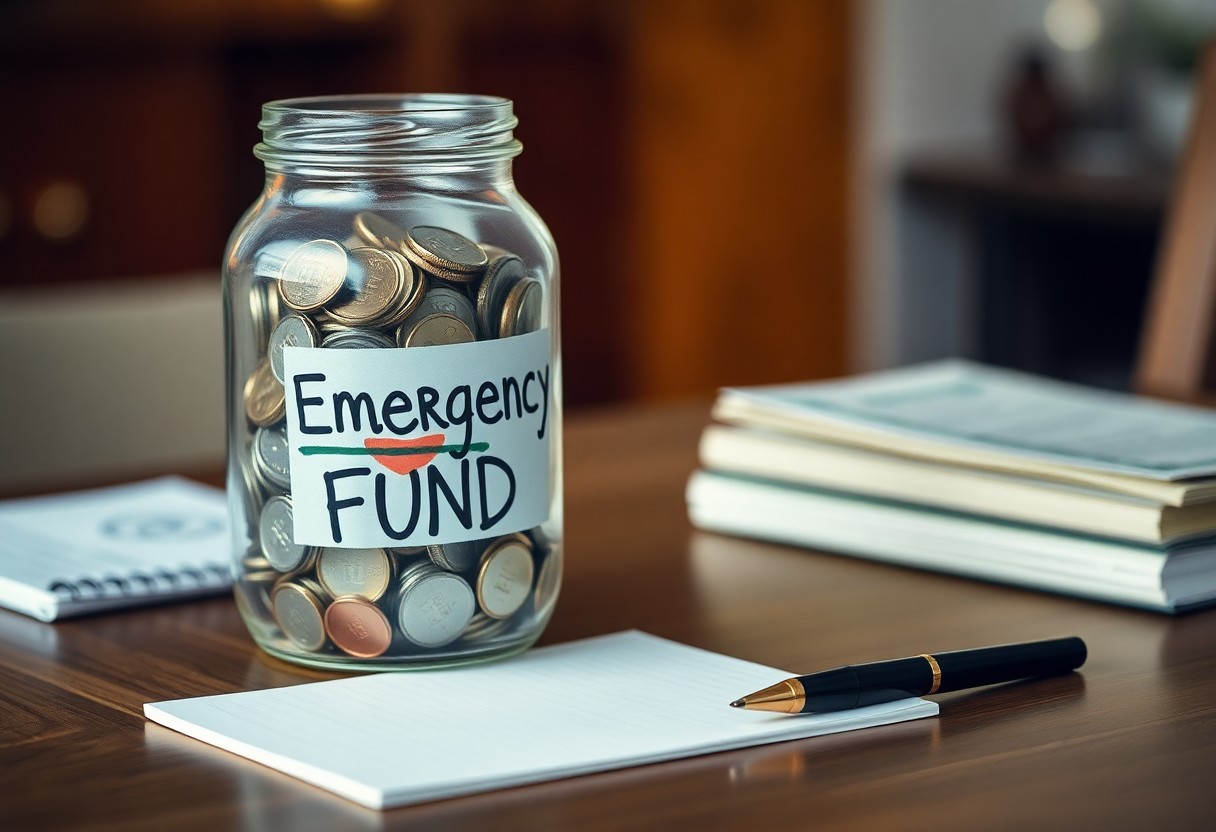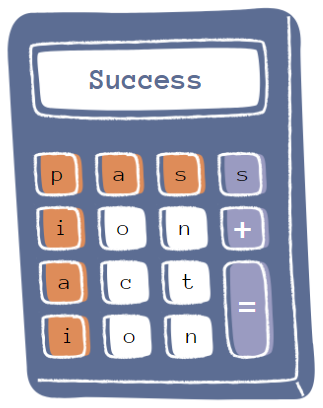It’s crucial to establish an emergency fund that prepares you for unexpected financial challenges. By following the Emergency Fund Rule, you can gain peace of mind knowing that you have a financial cushion to rely on when life throws you a curveball. This guideline not only advises you on how much to save but also helps you set achievable savings goals. Discover what it takes to secure your financial future and why having an emergency fund is a vital component of any successful savings strategy.
Key Takeaways:
- Emergency Fund Size: A recommended goal is to save at least three to six months’ worth of living expenses to cover unexpected emergencies.
- Accessibility: Ensure your emergency funds are kept in a liquid account, such as a high-yield savings account, to allow quick access when needed.
- Regular Contributions: Consistently contribute to your emergency fund, treating it like a bill, to build financial security over time.
1. Set aside three to six months’ expenses.
2. Prioritize saving for unexpected financial emergencies.
3. Keep funds in an easily accessible account.
4. Regularly assess and adjust your savings goal.
5. Use emergency fund only for true emergencies.
6. Start small, then gradually increase your savings.
Understanding the Emergency Fund Rule
As you navigate your financial journey, understanding the Emergency Fund Rule is vital to safeguard your financial health. This rule emphasizes the importance of having savings set aside specifically for unexpected expenses that can disrupt your financial stability. You should aim to have three to six months’ worth of living expenses saved in a separate fund, ensuring peace of mind when emergencies arise.
Definition of Emergency Fund
Against popular belief, an emergency fund isn’t just a general savings account. It is a dedicated reserve of cash specifically meant for unforeseen events like medical emergencies, car repairs, or job loss. This fund acts as a financial buffer, allowing you to cover vital expenses without going into debt.
Importance of an Emergency Fund
Against the backdrop of today’s uncertain economic climate, having an emergency fund is fundamental to maintaining your financial independence. It serves as your financial safety net, providing you reassurance that you can handle sudden financial setbacks without inhibiting your long-term savings plans or accumulating debt.
Hence, an emergency fund not only protects you from immediate financial burden but also enhances your overall financial resilience. By ensuring you have liquid assets available, you gain the freedom to make informed financial decisions without the stress of unplanned expenses. This proactive approach can ultimately lead to greater financial wellness and confidence in your future.
Determining the Right Amount for Your Emergency Fund
Some individuals find it daunting to determine the right amount for their emergency fund. The ideal size depends on your unique financial situation, including monthly expenses, income stability, and personal comfort levels. It’s crucial to assess how much you need to cover at least three to six months’ worth of crucial costs to ensure you stay secure during unexpected events.
Factors to Consider
To effectively calculate your emergency fund needs, consider the following factors:
- Your monthly living expenses
- Job stability and income sources
- Dependents and their financial needs
- Health conditions that may require extra funds
After assessing these factors, you’ll be better equipped to decide on the appropriate savings goal for your emergency fund.
Recommended Savings Goals
On average, financial experts recommend having an emergency fund that covers three to six months of living expenses. This range provides a solid safety net for most individuals and families, ensuring you can manage unforeseen circumstances without jeopardizing your financial health. You should adjust this goal based on personal factors like job security and family size.
Recommended savings goals often fluctuate based on your individual circumstances. If you’re self-employed or your income varies, you might aim for a higher savings goal, such as six to twelve months of expenses. For those with stable jobs and no dependents, three months may suffice. Tailoring your emergency fund to fit your financial landscape helps ensure you’re adequately prepared for life’s uncertainties.

Strategies to Build Your Emergency Fund
Once again, establishing an emergency fund is a vital step in financial preparedness. To guide you on how much to save for emergencies, it’s necessary to adopt effective strategies. Consider setting specific savings goals, cutting unnecessary expenses, and prioritizing your savings to build that financial buffer you need.
Budgeting Tips
At the heart of building your emergency fund lies effective budgeting. You should track your income and expenses to identify areas where you can save. Here are some useful tips:
- Create a monthly budget plan.
- Identify discretionary spending.
- Set aside a percentage of your income specifically for savings.
After you establish a plan, make it a habit to review and adjust your budget regularly.
Automating Savings
Before you explore building your emergency fund, consider automating your savings. By setting up automatic transfers from your checking account to your savings account, you ensure consistent contributions without thinking about it.
But, don’t underestimate the power of automation. This simple step can help you stay disciplined and make saving feel less burdensome. Start small and gradually increase the amount as you get comfortable, making your financial goals much easier to achieve over time.
Common Misconceptions About Emergency Funds
Despite the importance of having an emergency fund, many people have misconceptions about what it actually entails. Some believe that an emergency fund is only necessary for those with unstable incomes, while others think it’s okay to rely solely on credit cards during emergencies. Understanding the true purpose of an emergency fund can help you prepare better for unexpected financial challenges that life may throw your way.
Myths and Realities
Across various discussions around personal finance, several myths about emergency funds have emerged. One common myth is that emergency funds should only cover a few months’ worth of expenses. In reality, your fund needs to reflect your unique situation, including job stability and personal expenses, providing you a safety net when unforeseen events occur.
Situations Where Emergency Funds Are Essential
Around you, emergencies can arise at any time, whether it’s a car breakdown, medical expenses, or job loss. Having an emergency fund allows you to handle these situations without resorting to high-interest debt or negatively impacting your long-term financial goals.
To effectively leverage your emergency fund, consider what scenarios you might face. Sudden medical bills can create financial strain, while unexpected job loss might take weeks or even months to resolve. Whether it’s necessary car repairs, home maintenance emergencies, or losses in income, your emergency fund can provide the peace of mind you need to navigate through these challenging times, allowing you to focus on getting back on track without overwhelming financial stress.
How to Access Your Emergency Fund When Needed
Now that you have established your emergency fund, it’s imperative to know how to access it efficiently when an unexpected expense arises. Whether you face medical bills, car repairs, or job loss, having a plan in place will help you navigate these situations smoothly. Ensure your money is in a safe and accessible account, avoiding unnecessary barriers that may cause delays in getting the funds you need.
Liquid Savings Options
Behind every robust emergency fund is a careful selection of liquid savings options. These are accounts that allow you to access your money quickly without penalties or delays. High-yield savings accounts, money market accounts, and even certain types of certificates of deposit (CDs) can be great choices. Look for accounts that offer easy transfer capabilities to ensure you can swiftly respond when emergencies arise.
Planning for Withdrawals
Below is a structured approach to planning for withdrawals from your emergency fund. By defining how much you’ll need ahead of time for various emergencies, you can prevent impulsive or unnecessary withdrawals. An organized plan helps ensure that you always have enough to cover unexpected expenses while still maintaining a healthy balance in your fund.
Also, it’s wise to establish a withdrawal strategy that prioritizes your most pressing needs. For example, you might want to set aside funds specifically for medical emergencies, job loss, or major repairs. By categorizing potential expenses and earmarking specific amounts, you can create a more effective and responsive emergency fund that stays ready for anything life throws your way.
Maintaining and Reassessing Your Emergency Fund
Unlike many savings goals, your emergency fund requires ongoing attention and adjustment. As your circumstances change, it’s important to revisit your fund to ensure it aligns with your current financial situation. Evaluate your potential risks and expenses regularly, and consider resources like the Emergency Fund: Why You Need One and How Much to … guide for up-to-date insights.
Regular Reviews
For optimal effectiveness, conduct regular reviews of your emergency fund—ideally, every six months. This practice allows you to assess changes in your expenses or financial obligations and update your savings target accordingly. Keep track of any new risks that may have arisen, like changes in employment or family dynamics, and adjust your fund to maintain your financial security.
Adjusting Your Savings Strategy
Fund your emergency savings strategy by analyzing your income and expenses periodically. As your salary increases or expenses fluctuate, recalibrating your savings goals can help ensure your fund grows accordingly. It’s always beneficial to allocate a specific percentage of any additional income towards your emergency savings to stay ahead.
At each review, analyze your overall savings strategy. If your lifestyle has changed, or if you’ve experienced significant financial shifts, you may need to alter your monthly contributions to your emergency fund. Keep an eye on any potential future expenses that could affect your finances, and adapt your savings plan to safeguard your monetary wellbeing effectively.
Conclusion
Hence, understanding and implementing the Emergency Fund Rule is crucial for your financial well-being. By setting aside three to six months’ worth of living expenses, you can protect yourself against unforeseen situations like job loss or unexpected medical bills. This safety net not only provides peace of mind but also fosters a sense of control over your finances. As you prioritize saving for emergencies, you position yourself to face life’s uncertainties with confidence and resilience.
Q: What is the Emergency Fund Rule and why is it important?
A: The Emergency Fund Rule suggests that individuals should save a specific amount of money to cover unexpected expenses such as medical emergencies, car repairs, or job loss. Experts generally recommend setting aside three to six months’ worth of living expenses in a separate savings account. This financial buffer acts as a safety net, providing peace of mind and helping individuals avoid falling into debt when faced with unforeseen circumstances.
Q: How do I determine how much I need in my emergency fund?
A: To establish an effective emergency fund, start by calculating your monthly living expenses, which might include rent or mortgage payments, utilities, groceries, transportation, and insurance. Once you have a total amount, multiply it by three to six, depending on your financial situation and comfort level. Factors like employment stability, health, and family circumstances may influence the exact amount you choose to save. Aim for a target that provides you with confidence and security.
Q: Where should I keep my emergency fund for easy access?
A: It is advisable to keep your emergency fund in a high-yield savings account or a money market account, where it can earn some interest while remaining easily accessible. Opt for an account that allows you to withdraw funds quickly and without penalties. Avoid investing your emergency fund in stocks or long-term investments, as these can be volatile and may not provide the liquidity needed during emergencies.

